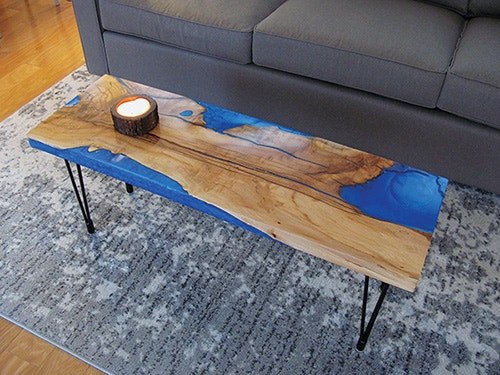Best Method for Filling Tabletop with Epoxy?
I am currently putting together a hollowed-out tabletop with the intent of inserting a ship profile that will be back-filled with clear epoxy. As you can imagine, once poured, there is no going back and, as much as I like to experiment to get the appropriate results, I really need to get this right the first time. I have done some research with respect to clear epoxy filler, and there seems to be a lot of short videos available on YouTube, etc., but I find very little specific information on the topic. For instance, is there shrinkage after curing? Is it better to pour a layer at a time or all at once? Does the depth of the fill affect the visual aspects of the insert? - Peter Hamon
Tim Inman: Measure twice, cut once. You must create a sample board set on which you can test your materials and your techniques. You must. Otherwise, you're casting your lot with the gods of serendipity. They are often not kind. As for your other questions: Epoxies create heat during curing. The thicker the cross-section, the more heat they will generate. I have seen pours like you're describing get so hot they smoke - and distort the epoxy. Epoxy shrinks when it sets, mostly. One nylon-modified epoxy I use for some fine furniture work actually expands. Test your product to be sure! There are any number of filler products available to use with epoxy. I like sanding dust from the woods I'm repairing as a favorite filler. Glass beads are great, too. Coloring materials are available, but they must be tested in small batches to know if their colors will remain true, or if they will shift during curing. Some epoxies are cured with phenolic compounds, and these can react with anilines to really play billy heck with the colors (yellows will turn into bright reds!). So, test, test, test.
Chris Marshall: Along with Tim's good advice, if you have a specific brand of epoxy you're planning to use, consider directing your questions to the experts who make it. There's probably a technical services phone number for that brand, and those folks should be able to give you some helpful pointers on how best to use their products for your table application. As you say, once it's done, it's done. So, definitely worth a phone call.
Keep the inspiration coming!
Subscribe to our newsletter for more woodworking tips and tricks





